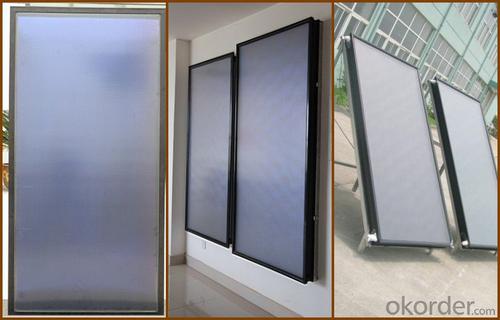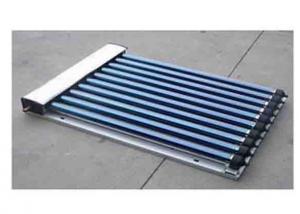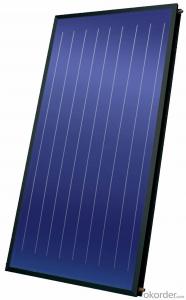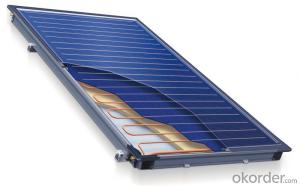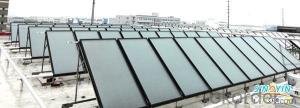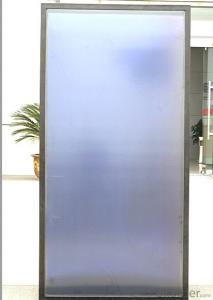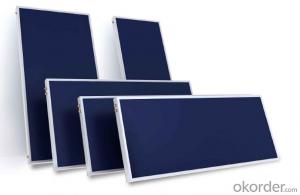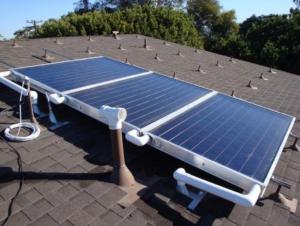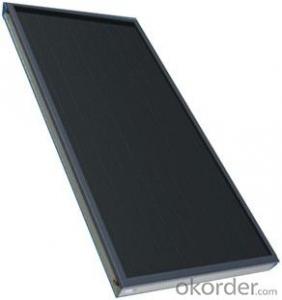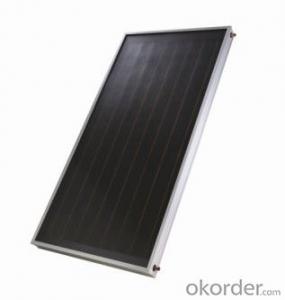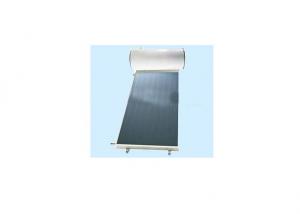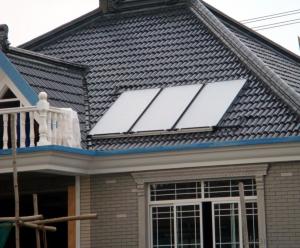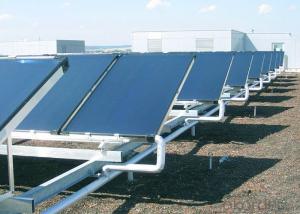High Quality Transpired Solar Collectors - Flat Plate Solar Panel Water Collector
- Loading Port:
- Shanghai
- Payment Terms:
- TT OR LC
- Min Order Qty:
- 50 pc
- Supply Capability:
- 100000 pc/month
OKorder Service Pledge
OKorder Financial Service
You Might Also Like
Flat Plate Solar Panel Water Collector High Quality
Factory introduction:
Our factory is located in Industry District,Suzhou,where is communication advantage,beautiful environment.It produces flat plate collector,solar water heating system and solar central heating with professional R&D,inspection,manufacture and market team.We have some senior expert and R&D team,main material uses high efficiency absorber from Italy and Germany with laser welding and advantage technology to produce 100000sets flat plate collector and solar water heating system.We have a good business credit to our customers.
1, Using main materials with imported blue titanium heat absorbing film, high-density insulation cotton, high purity copper pipe and toughened glass of super white cloth grain;
2, Using the most advanced whole plate laser welding technology between copper and endothermic membrane , solder joint evenly, and welding strength good, no damage, mall resistance of hot transfer coating;
3, Aluminum alloy frame and back the whole pressure riveting process (not a riveting process between the corners of use weld reinforcement, the back smooth, level off, good sealing, and low heat loss, and under 1000 kg dead load of the object deformation;
4, Unique frame, layering, sealing strip structure design, making the collector sealing good, and the plate will not produce water fog and water, ensure the collection hot plate absorption efficiency and service life;
5, Bearing capacity is good and under the pressure of 1.5 Mpa, there will be no leakage phenomenon
6, Flexible installation and no restrict have achieved the integration of solar energy and architecture
Products installation pictures:
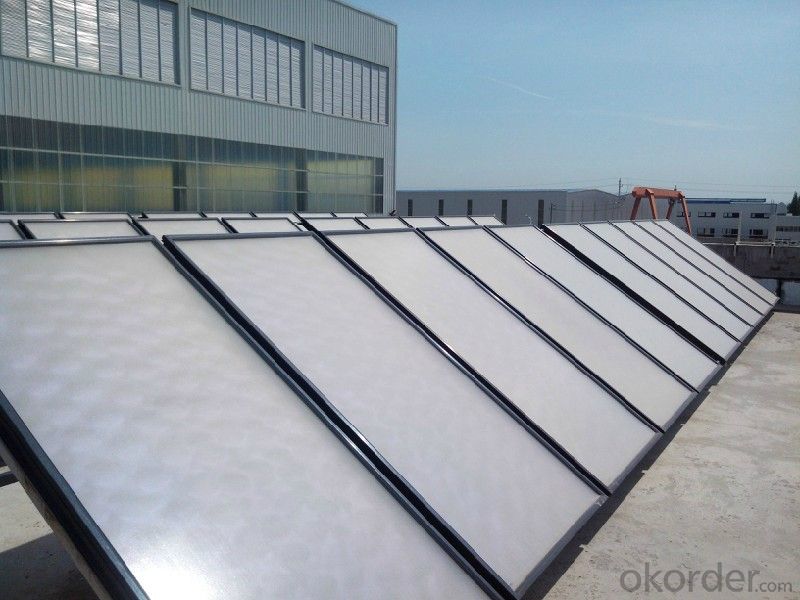
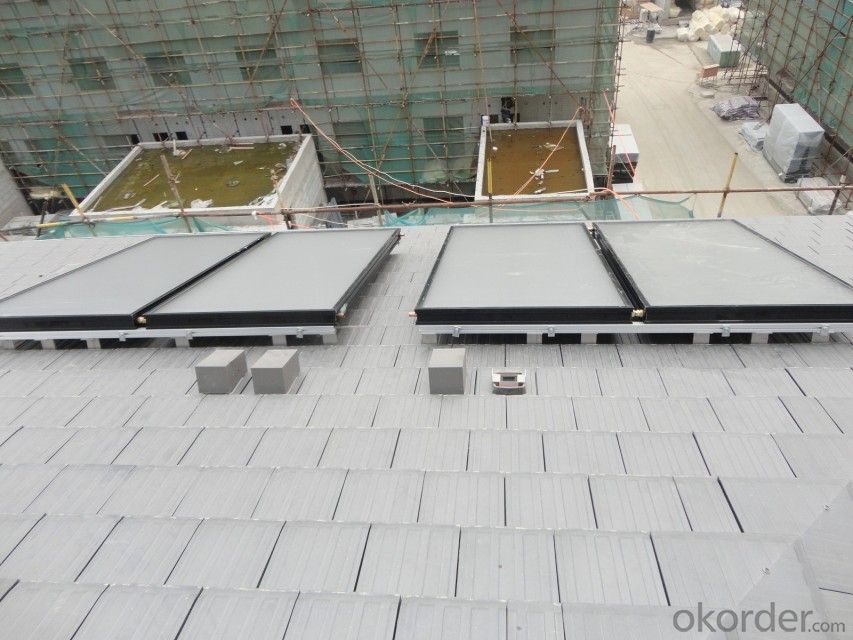
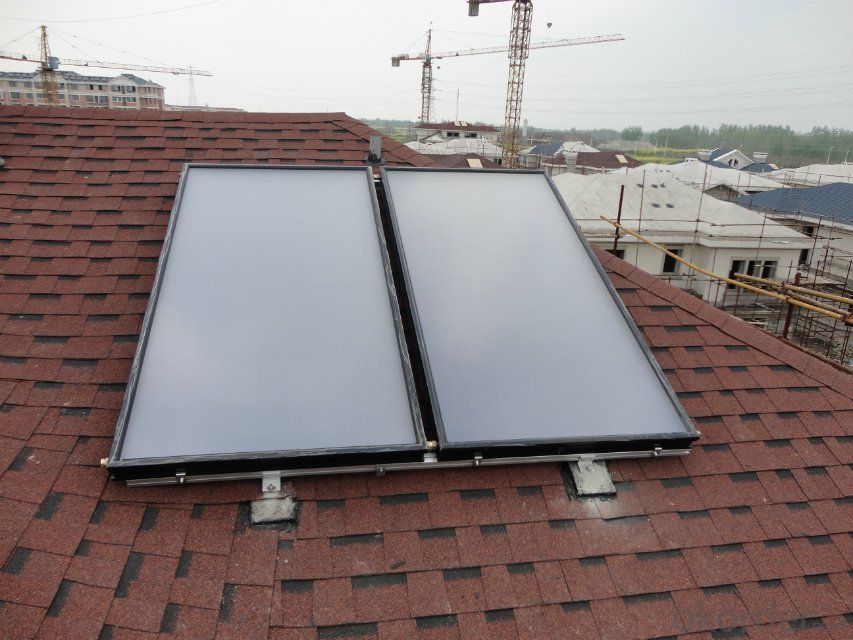
Our service:
1.Your inquiry related to our products or prices will be replied in 24 hours.
2.Well-trained and experienced staffs are to answer all your enquiries in fluent English.
3.OEM&ODM,any your customized plates or strips we can help you to design and put into production.
4.Distributorships are offered for your unique design and some our current products.
5.Protection of your sales area,ideas of design and all your private information.
FAQ:
1.Can you accept OEM ?
Yes,we can print your brand and logo on box and carton, and also can make the packing as per your request.
2. What are your MOQ?
50 pcs
3.What are your terms of payment?
1) T/T;L/C
2) For less than 500 USD,we also accept PAYPAL,Western Union,Escrow,MoneyGram
4. How long is the delivery time?
The delivery time is about 35 working days.
5.What kind of packing for this item?
Carton box for FCL;Plywood box for LCL
- Q: What is the energy payback time for a solar collector?
- The energy payback time for a solar collector is the period it takes for the collector to generate the same amount of energy that was used in its production and installation.
- Q: Can solar collectors be used for pool heating?
- Yes, solar collectors can be used for pool heating. Solar collectors capture the sun's energy and convert it into heat, which can then be used to warm pool water. This is a cost-effective and environmentally friendly way to heat pool water, as it relies on renewable energy sources.
- Q: How do solar collectors perform in windy conditions?
- Solar collectors generally perform well in windy conditions. While strong winds may cause some minor efficiency reductions due to increased heat loss, the design of solar collectors is typically optimized to minimize this effect. Additionally, wind can help in cooling the collectors, preventing overheating and improving their overall performance.
- Q: What is the effect of bird droppings on solar collectors?
- Bird droppings can have a negative effect on solar collectors as they can reduce the efficiency of the panels by blocking sunlight and reducing the amount of energy they can produce. Additionally, bird droppings can corrode the surface of the panels over time, potentially causing damage that may require cleaning or repairs.
- Q: Can solar collectors be used for heating industrial wastewater?
- Heating industrial wastewater can be achieved using solar collectors. These collectors can harness the sun's energy and transform it into heat, which has multiple applications, including water heating. Various reasons, such as treatment, sterilization, or maintaining specific temperature requirements, demand the heating of industrial wastewater. To supplement or replace traditional heating methods, solar thermal collectors can be integrated into the wastewater treatment system. They can pre-heat the wastewater before it enters the treatment process, thereby reducing the energy consumption of conventional heating systems. Moreover, solar collectors can help maintain the desired temperature of the wastewater throughout the treatment process, minimizing the need for additional energy inputs. The use of solar collectors for heating industrial wastewater presents several benefits. Firstly, it decreases reliance on fossil fuels and diminishes the emission of greenhouse gases associated with conventional heating methods. Secondly, it can lead to significant cost savings in terms of energy consumption. Lastly, solar thermal systems have a lengthy lifespan and require minimal maintenance, making them a dependable and sustainable solution for heating industrial wastewater. Nevertheless, it is crucial to consider various factors, such as sunlight availability, wastewater treatment system size, and specific temperature requirements, when assessing the viability of using solar collectors for heating industrial wastewater. A thorough analysis of these factors should be conducted before implementing solar thermal systems for this purpose.
- Q: Are solar collectors suitable for heating sports facilities?
- Yes, solar collectors are suitable for heating sports facilities. Solar collectors can efficiently convert sunlight into heat energy, which can be used to heat water or air for indoor spaces. This makes them a sustainable and cost-effective solution for heating large areas such as sports facilities, providing a comfortable environment for athletes and spectators alike. Additionally, solar collectors can be easily integrated into the existing infrastructure of sports facilities, making them a practical and environmentally friendly choice.
- Q: Can solar collectors be used for heating recreational vehicles and boats?
- Yes, solar collectors can be used to heat recreational vehicles and boats. Solar thermal systems can be installed on these vehicles to capture sunlight and convert it into heat, which can then be used for space heating or hot water heating purposes. This renewable energy source is environmentally-friendly, reduces reliance on traditional fuel sources, and can provide cost savings in the long run.
- Q: Are there any limitations to using solar collectors?
- Yes, there are limitations to using solar collectors. Some of the limitations include the dependence on sunlight availability, as solar collectors require direct exposure to sunlight to generate electricity or heat. Cloudy weather, shade, or night-time can significantly reduce their effectiveness. Additionally, the efficiency of solar collectors can be affected by dirt, dust, or snow accumulation on the panels, which may require regular maintenance. Cost can also be a limitation, as the initial investment and installation expenses may be higher compared to traditional energy sources. Lastly, the physical space required for installing solar collectors may be a constraint, especially in densely populated areas or buildings with limited rooftop surfaces.
- Q: Can solar collectors be used for heating radiant wall systems?
- Yes, solar collectors can be used for heating radiant wall systems. Solar collectors can capture and convert sunlight into thermal energy, which can then be used to heat water or directly heat the radiant wall system. This can provide a sustainable and efficient way to heat the walls of a building using renewable energy sources.
- Q: Can solar collectors be used for heating theaters and concert halls?
- Yes, solar collectors can be used for heating theaters and concert halls. Solar thermal systems can capture and convert sunlight into heat energy, which can then be used for space heating purposes. This can help reduce the reliance on conventional heating systems and lower energy costs while being environmentally friendly.
Send your message to us
High Quality Transpired Solar Collectors - Flat Plate Solar Panel Water Collector
- Loading Port:
- Shanghai
- Payment Terms:
- TT OR LC
- Min Order Qty:
- 50 pc
- Supply Capability:
- 100000 pc/month
OKorder Service Pledge
OKorder Financial Service
Similar products
Hot products
Hot Searches
Related keywords



